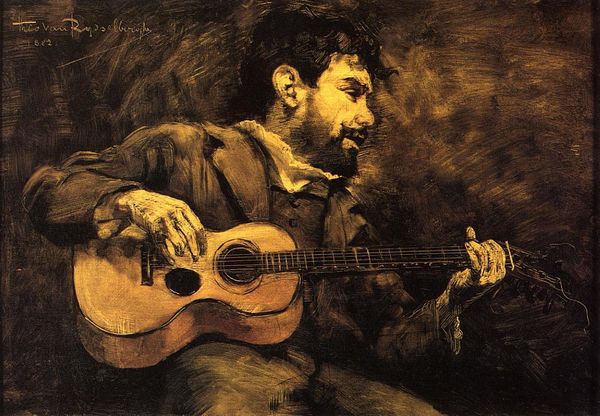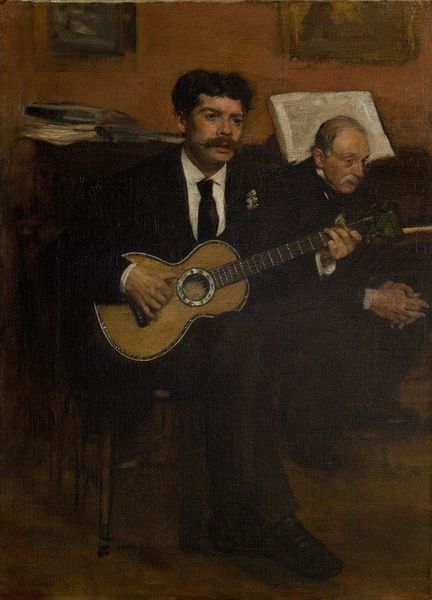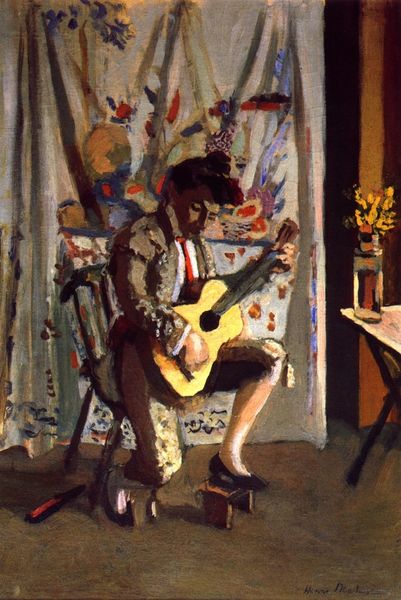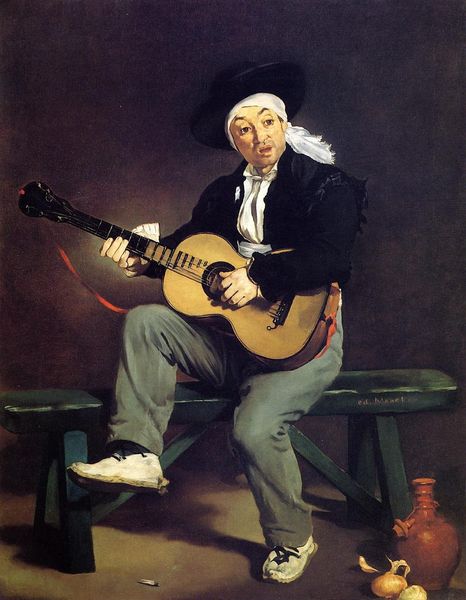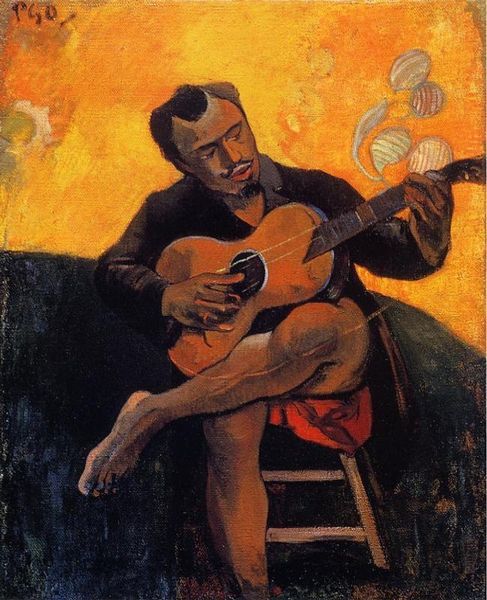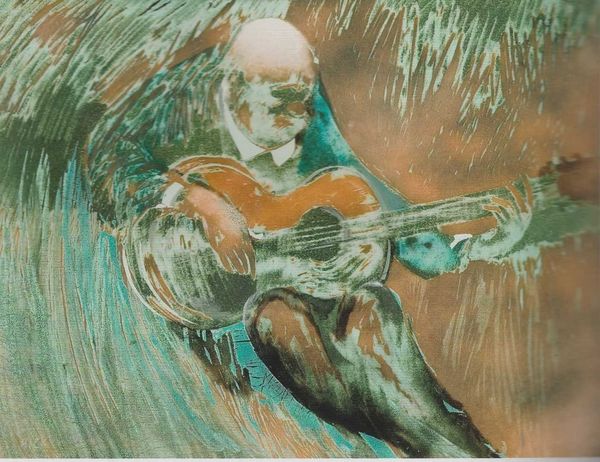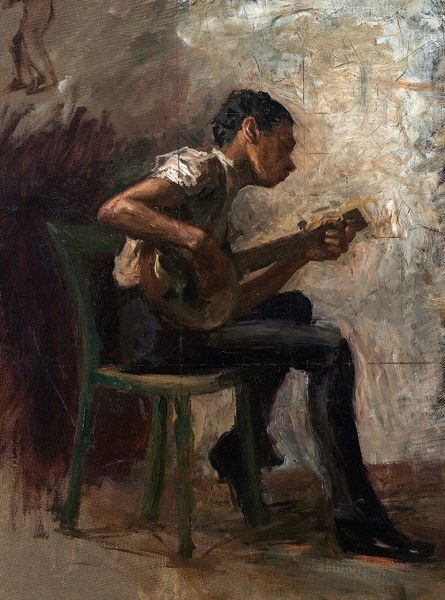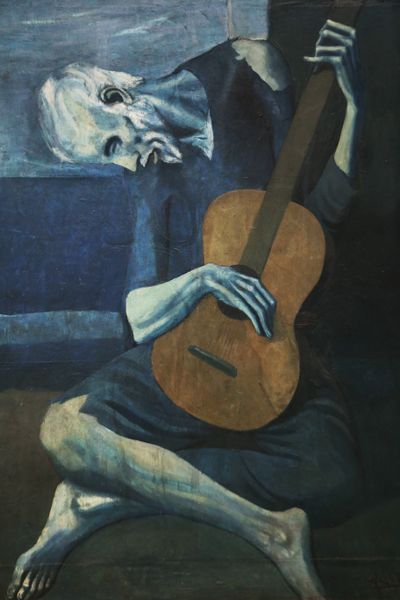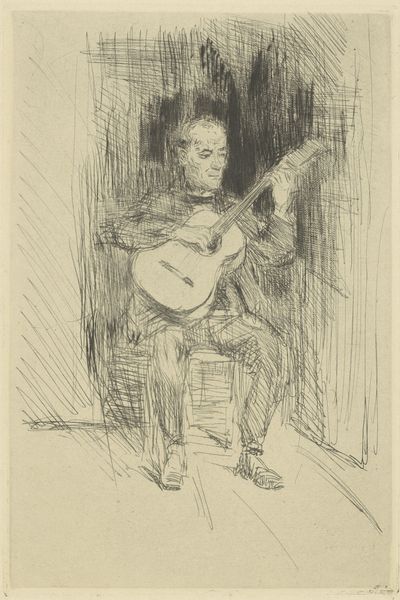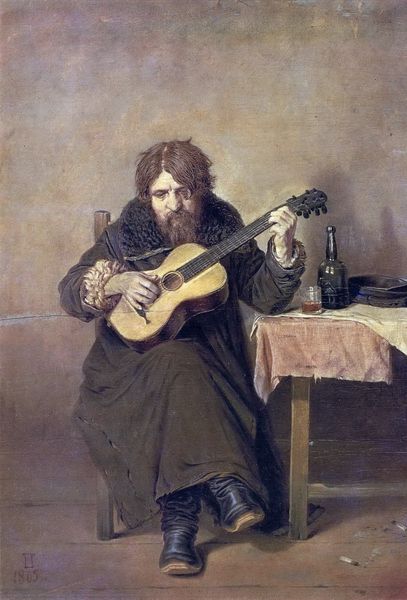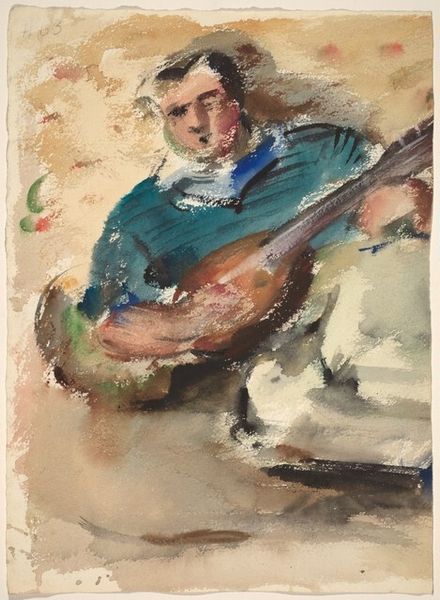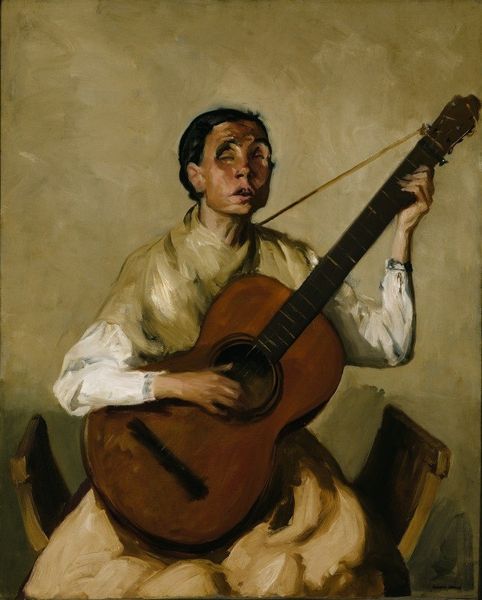
Portrait of the Artist V.S. Svarog 1915
0:00
0:00
ilyaefimovichrepin
Belarusian National Museum of Fine Arts, Minsk, Belarus
#
oil painting
#
portrait reference
#
acrylic on canvas
#
animal portrait
#
animal drawing portrait
#
portrait drawing
#
facial portrait
#
portrait art
#
fine art portrait
#
digital portrait
Dimensions: 70.5 x 108 cm
Copyright: Public domain
Curator: Ilya Repin painted this “Portrait of the Artist V.S. Svarog” in 1915. You can find it at the Belarusian National Museum of Fine Arts. What's grabbing you first about it? Editor: Definitely the darkness. The deep blacks surrounding him give such a somber tone, making his face, the guitar, the absolute focal points. You almost miss the piano lurking in the background at first. Curator: Repin was deeply engaged with depicting Russian society. I wonder how this portrait of Svarog, a lesser-known figure compared to some of Repin’s other subjects, reflects the artistic and intellectual circles of the time. Was Repin aiming to elevate his status, perhaps? Editor: Well, look at the impasto – the way he’s built up those paint layers, especially on the guitar’s body and Svarog's face. It’s almost sculptural. There’s a tangible quality there. Considering that 1915 was smack-dab in the middle of World War I, do you think he's commenting on the accessibility of fine art, as compared to that of crafting musical instruments during a time of upheaval and rationing? Curator: It's interesting you point out the guitar itself. Consider the role of artistic patronage then; Repin's support could represent an alignment of cultural forces during a period of political unrest and cultural questioning in Russia. This resonates beyond just a simple portrait; it becomes an important artifact about cultural institutions as they navigated an unstable period. Editor: Exactly, I'm just compelled to dig deeper into the production aspect. And in tandem, the tension, the social implications! Even the signature's placement. It appears almost casually dashed off. Do you see that in dialogue with a tradition, a movement? Is he using an amateur application as symbolism in this specific placement of his name? Curator: Precisely, and those nuances invite discussion about art and value judgements across a society. Editor: Well, now I'm curious. Is this portrait still teaching the cultural and socioeconomic mores that it was commissioned to do? Has anything changed about the piece now that it's in a public forum, available to the digital and socioeconomic powers we wield? Curator: An intriguing portrait overall, a powerful reminder of art’s role in shaping historical memory. Editor: Indeed. It pushes me to investigate not just the what, but very deeply, the how and the why.
Comments
No comments
Be the first to comment and join the conversation on the ultimate creative platform.

